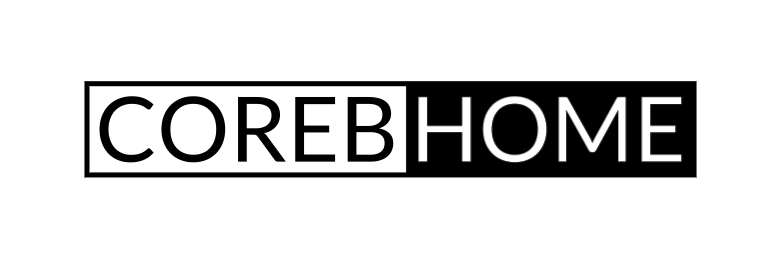In the ever-evolving landscape of home technology, a profound shift towards holistic well-being has emerged as a guiding principle. The integration of cutting-edge innovations with the science of wellness has given rise to a new paradigm – Home Wellness. Beyond the conventional realms of smart homes, this concept encapsulates a sophisticated ecosystem designed to foster physical health, mental well-being, and an overall sense of harmony within our living spaces. From intelligent air purification systems to advanced sleep technologies, the integration of professional-grade Home Wellness technologies is redefining the way we perceive and experience our homes.

At the forefront of this wellness revolution is the evolution of air purification systems. In the wake of heightened awareness about indoor air quality, modern homes are increasingly equipped with intelligent air purifiers that go beyond basic filtration. These systems utilize state-of-the-art sensors to monitor air quality in real-time, detecting pollutants, allergens, and particulate matter. Advanced filtration technologies, including HEPA filters and activated carbon, ensure that the air we breathe is not only clean but also free from harmful contaminants. The integration of smart features allows homeowners to monitor and control air quality remotely, creating an environment conducive to respiratory health and overall well-being.
Intelligent lighting solutions play a pivotal role in promoting Home Wellness by aligning with our natural circadian rhythms. Circadian lighting systems dynamically adjust color temperatures and brightness levels throughout the day, mimicking the natural progression of sunlight. This not only enhances the aesthetic appeal of living spaces but also regulates our internal body clocks, promoting better sleep, focus, and overall mood. By harmonizing artificial lighting with our natural biological rhythms, these systems contribute to a holistic sense of well-being within the home environment.
Advanced water purification technologies are integral to the pursuit of wellness within smart homes. Water filtration systems, equipped with multi-stage purification processes, remove contaminants and impurities, ensuring access to clean and safe drinking water. Additionally, smart faucets and shower systems with built-in sensors optimize water usage, contributing to environmental sustainability. The synergy of these technologies not only supports physical health but also underscores the importance of a mindful and eco-conscious lifestyle.
Sleep technologies have undergone a renaissance within the context of Home Wellness. Intelligent mattresses and sleep tracking devices use sensors to monitor sleep patterns, heart rate, and body movements. The data collected is then analyzed to provide personalized insights into sleep quality and duration. Smart bedroom environments can be configured to create optimal sleep conditions, adjusting lighting, temperature, and even aromatherapy to facilitate a restful night’s sleep. The integration of these technologies acknowledges the pivotal role of quality sleep in overall well-being, offering users the tools to enhance their sleep hygiene and, consequently, their health.
Mindful spaces within smart homes contribute to mental well-being, acknowledging the interconnectedness of the mind and body. Meditation and relaxation technologies, often integrated into dedicated wellness zones, offer guided sessions and ambient environments conducive to mindfulness practices. Biophilic design principles, incorporating natural elements and greenery within living spaces, further promote a sense of tranquility and connection with nature. The harmonious design of these spaces encourages relaxation, stress reduction, and mental rejuvenation, fostering a holistic approach to well-being.
The integration of fitness technologies within the home environment addresses the growing importance of physical wellness. Smart home gyms, equipped with connected fitness equipment and interactive workout platforms, enable users to engage in personalized exercise routines from the comfort of their homes. Wearable fitness trackers and health monitoring devices seamlessly sync with these systems, providing real-time feedback and performance insights. This interconnected ecosystem not only promotes physical fitness but also empowers users to take an active role in managing their health and well-being.
Smart nutrition and kitchen technologies contribute to a well-rounded approach to Home Wellness. Intelligent kitchen appliances, such as smart refrigerators and cooking devices, provide nutritional insights and personalized meal recommendations based on dietary preferences and health goals. The integration of smart grocery management systems ensures that the kitchen is stocked with fresh and healthy ingredients. By facilitating mindful eating habits, these technologies contribute to the overall wellness of residents, aligning with the understanding that nutrition plays a crucial role in maintaining a healthy and balanced lifestyle.
Home automation systems, serving as the backbone of Home Wellness, enable seamless integration and control of various wellness technologies. Centralized interfaces, often accessible through mobile applications, allow users to monitor and adjust different aspects of their home environment. The ability to create customized wellness routines, such as morning wake-up sequences or evening relaxation settings, adds a layer of personalization to the Home Wellness experience. Automation systems also facilitate energy efficiency, contributing to both environmental sustainability and the overall well-being of residents.
The integration of artificial intelligence (AI) has elevated the capabilities of Home Wellness technologies, enabling predictive and adaptive functionalities. Machine learning algorithms analyze user behavior and preferences, allowing the system to anticipate and proactively adjust the home environment. For instance, an AI-powered wellness system can learn from daily routines and external factors to optimize lighting, air quality, and temperature settings, creating an environment that aligns seamlessly with the residents’ well-being goals.
As society embraces a more holistic understanding of well-being, Home Wellness technologies are not only transforming individual homes but also contributing to a broader cultural shift towards prioritizing health and balance. The incorporation of wellness technologies into architectural designs and urban planning reflects a commitment to creating environments that support the physical and mental health of communities.
In conclusion, the integration of cutting-edge Home Wellness technologies is ushering in a new era of living that prioritizes the health and well-being of residents. Beyond the conventional definitions of smart homes, these technologies create environments that support physical health, mental well-being, and a harmonious lifestyle. As we navigate the complexities of modern living, the Home Wellness paradigm stands as a beacon, illuminating a path towards homes that not only reflect technological sophistication but also foster a holistic sense of well-being.









No Comment